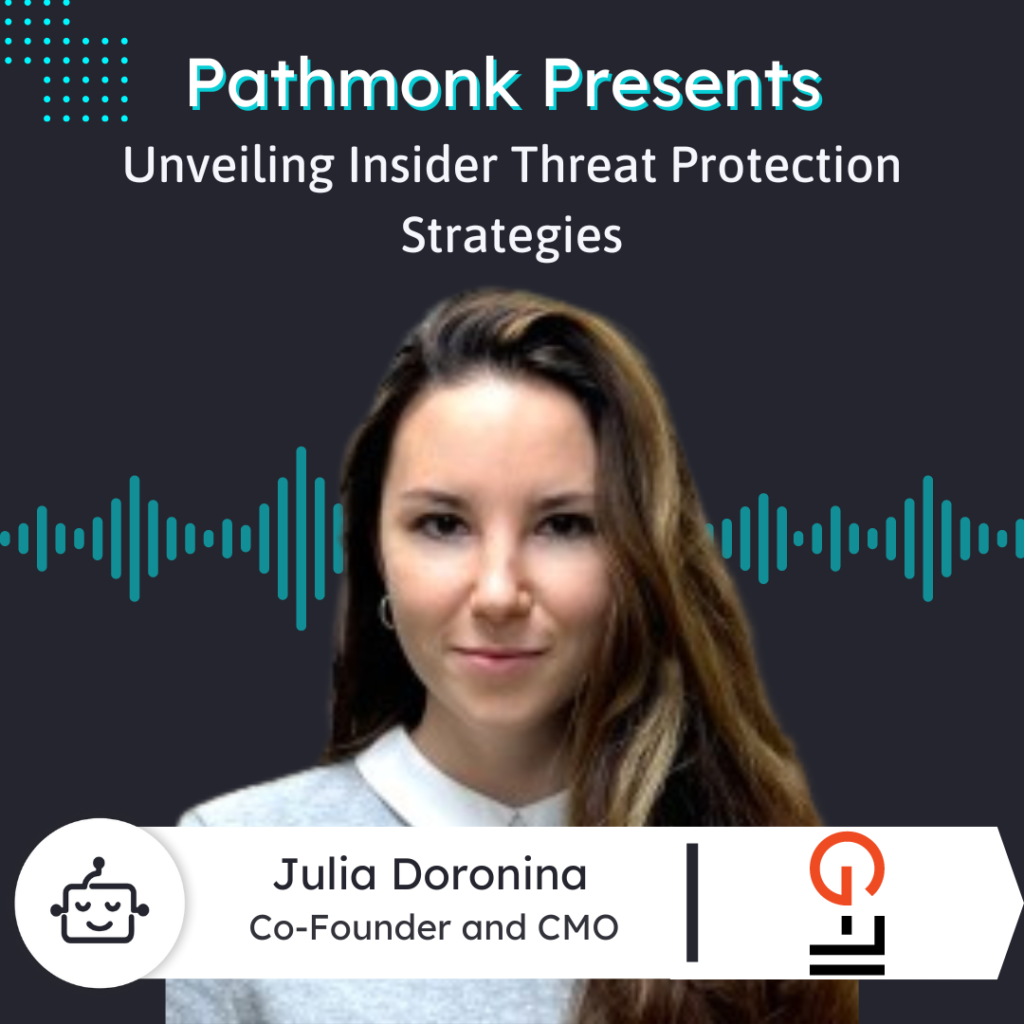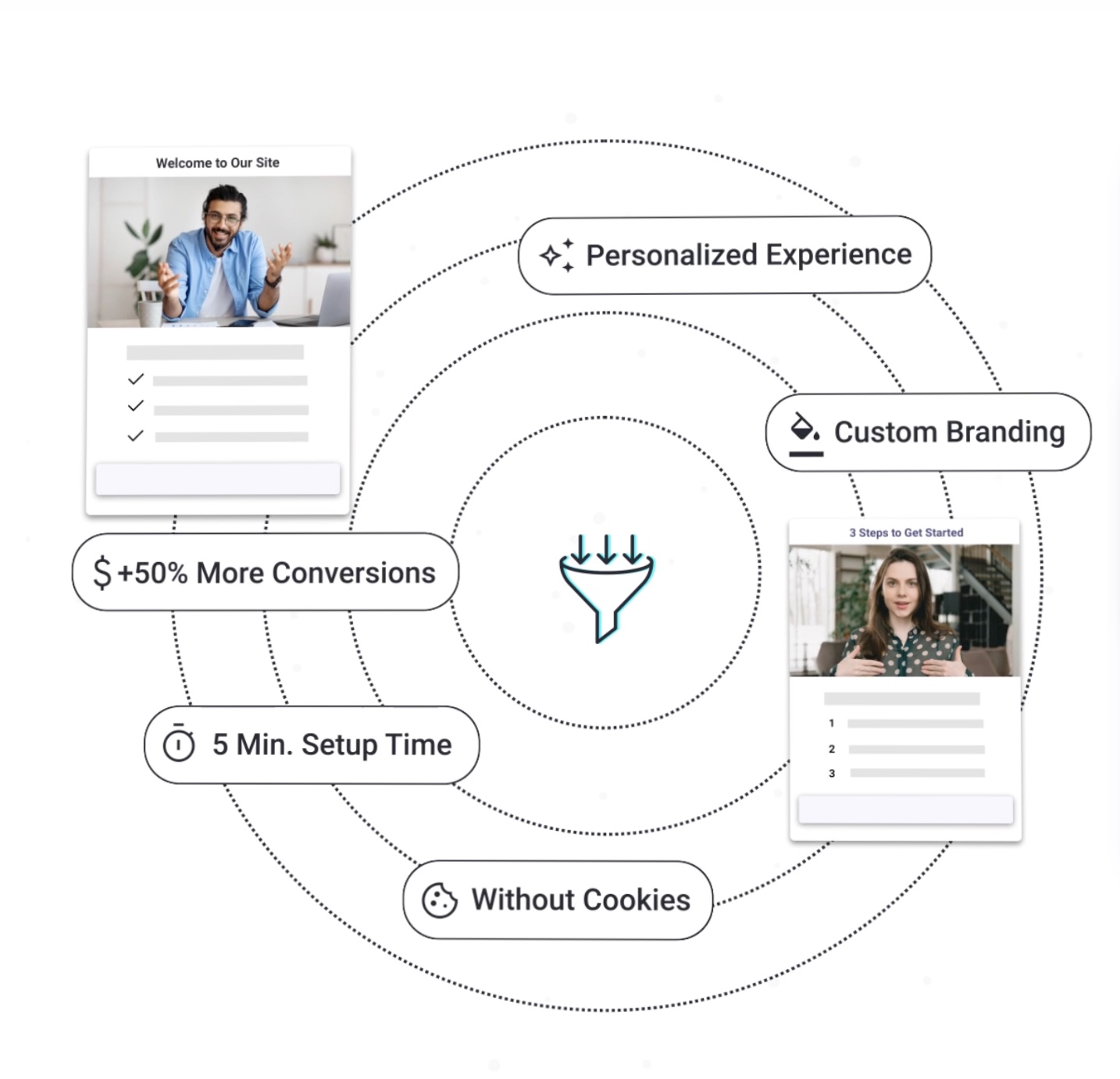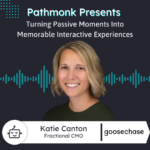
Introduction
In this intriguing episode of Pathmonk Presents, we dive into a compelling discussion with Julia Doronina, the co-founder and Chief Marketing Officer of G71 Security.
During the episode, Julia sheds light on G71 Security’s cutting-edge approach to combatting insider threats by harnessing their innovative invisible fingerprinting technology. This technology has proven to be a game-changer in safeguarding organizations’ sensitive documents, reports, and intellectual property from the potential dangers posed by internal data breaches.
Julia provides valuable insights into how G71 Security’s forward-thinking strategies are effectively bolstering organizations’ defenses against internal security risks.
More Sales From Your Website With AI
Personalized interactions based on your users' behaviour to get +50% more conversions.

Ernesto Quezada: Pathmonk is the intelligent tool for website lead generation. With increasing online competition, over 98% of website visitors don’t convert. The ability to successfully show your value proposition and support visitors in the buying journey separates you from the competition. Online, Pathmonk qualifies and converts leads on your website by figuring out where they are in the buying journey and influencing them in key decision moments. With relevant micro experiences like case studies, intro videos, and much more, stay relevant to your visitors and increase conversions by 50%. Add Pathmonk to your website in seconds. Let the AI do all the work and get access to 50% more qualified leads while you keep doing marketing and sales as usual. Check us out on pathmonk.com. Welcome to today’s episode. Let’s talk about today’s guest. We have Julia Duronina with G71, co-founder and CMO with them. How are you doing today, Julia?
Julia Doronina: Hi. Thank you very much for this opportunity.
Ernesto: It’s great. I mean, it’s an opportunity for us as well to have G71 here and, well, to have you with so much experience. So, first off, Julia, let’s start off by knowing a little bit more about G71. Can you tell us a little bit more?
Julia: Yes, of course. So, G71 Security is a startup, first of all, and we help companies protect their confidential documents, sensitive reports, sensitive presentations, sensitive email attachments, or intellectual property assets. So how are we doing this? We have a specific patented technology of invisible fingerprinting. Each time employees inside the company interact with any documents, they will see not the original documents, but a new copy created for them with our invisible fingerprint. In case of a leak, if some of the insiders, because insider threats are a very big problem in the cybersecurity field, leak information, we can investigate who was the culprit of the exact leak. We work with different evidences, like photos, screenshots of the documents, hard copies of the documents, and after the leak, just in 30 seconds using our investigation model, the company can detect and investigate the name of the leaker.
Ernesto: Okay, that’s interesting to hear. So then, is there a vertical? Is there an ideal ICP that you guys like to go for?
Julia: Yeah, I think that we have many ICPs. It depends on the size of the company and the industry. We can work with all companies because all of them have sensitive documents, but it depends on the requirements in different types of companies. For instance, the best ones for us can be companies from the financial industry because they have a lot of financial contracts and reports, the healthcare industry because they have a lot of information about their users, the government, of course, or military organizations, and the telecom industry because they have a lot of information about their customers.
Ernesto: Okay. All right. Interesting to hear that. And so then how would somebody from these industries find out about G71? Is there a top client acquisition channel for you guys?
Julia: Yeah. As I mentioned previously, we are a startup, and right now we are at the stage of market research. Mostly we started our selling activities approximately one and a half years ago, and it took approximately four years just to develop the technology and the platform. Right now we are trying to study the market and get feedback from experts on the market. So the main channel right now, if we’re talking about communication with our customers, is mostly direct sales, but not general sales. We try to talk with our potential customers to make a customer development process. During the week, I have more than 5-10 different interviews with potential customers. It’s mostly about showing the demo, asking for feedback, and asking for advice. After that, some of these people try to sell our solution to themselves. It’s like an advice call, but after that, people are very interested in our solution and they ask about how to buy it and what the cost is. It’s not a general approach to lead generation, but it’s working well right now because we offer something new for the market. The main challenge for us right now is that we don’t have any direct competitors. On the one hand, it’s good news because we don’t have any of them and we can take the market. On the other hand, it’s very difficult to tell people who we are because it’s hard to classify our product and identify our closest competitors. That’s why it’s very difficult to show the value of the product for return on investment. My goal as a Chief Marketing Officer is not just to create a marketing strategy, but to create sales, marketing, and product strategies connected with business goals. First, to increase awareness about our startup and this technology, and second, to find leads and customers who can buy our solution. We have a website, of course, but it mostly just shows general information about the solution to increase credibility. It’s not a lead generation channel for us. The main ones are LinkedIn cold outreach and email cold outreach. We create sequences of different automatic emails or steps to reach people and tell them about our solution.
Ernesto: Perfect. Awesome. On that note, besides the two strategies that you have, is there a tip or recommendation for a method that you would suggest to our listeners for lead generation?
Julia: Yeah. If we’re talking about direct sales via cold outreach, I think the main thing is to try not to sell, but to tell. Tell the story about your product and what can be interesting for the customer. First, you should understand their pain points and how you can solve their problems. That’s why we try to make many interviews to understand real pain points for each industry and ICP. Only after that, when I’m creating content for our emails or sequences on LinkedIn, I know what to write and what to emphasize. For instance, in the financial industry, we understand it can be super-secret financial contracts about the acquisition of other companies. For healthcare, it can be another type of document. So first, research. After that, try any marketing or selling activities.
Ernesto: Okay, perfect. Awesome. Thank you so much for sharing that with us, Julia. Well, let’s switch gears a little bit and talk about you as a leader. You being co-founder and CMO for G71, what are some key tasks you like to focus on in your day-to-day work?
Julia: Yeah, I think that each day I start with a team call. It takes approximately 30-40 minutes to understand our tasks for the day and discuss any news. Each day, I try to research any news and use cases on the market to identify additional potential customers. The best way for us to sell our solution is to go to companies that have already faced the problem of insider leaks. So, I check all the information each day about recent leaks and investigations. First, I check my email. After that, I check my LinkedIn inbox, update any contacts in our sequences for cold outreach, and review Google Ads campaigns if we have them. I try to read news, and each Tuesday, I create a new blog post for our website because it’s a good approach to optimize our website for SEO. For example, we had a blog for one of our products and made an interesting article comparing our solution with watermarks. We reached the second position in Google for popular keywords related to watermarks within three months. This is why I’m trying to publish more in our blog right now. The main thing is that I’m the only one in the marketing team, so I post once a week, but we need to do it more often.
Ernesto: Definitely. But you’re in the process of growing. Great to hear that. It looks like you have a lot on your plate, so that’s great to hear you’re able to balance that out, Julia. Let’s jump into our next section, which is our rapid-fire question round. Are you ready for them?
Julia: Oh, let’s try.
Ernesto: All right. First up, there is a lot of overwhelming marketing information out there, but is there a channel that you like to go through to get your information on marketing?
Julia: Yeah, I think the best channel for me is to talk with other marketers. I’m trying to find people like mentors or other startups, other marketers, and we exchange our experiences. This is the best way because they tried something, I tried something, and we can exchange ideas. So, one or two calls with different marketers or startupers help me understand if I need to try new approaches or channels.
Ernesto: Okay, perfect. Awesome. Next, what is the last book that you read?
Julia: As I said, we are in the development process and trying to make many interviews with our customers. The last book I read was “The Mom Test,” about the customer development process and how to talk with people. It’s not a modern book, I think it’s ten years old, but it’s very good for thinking about what you do and how you can improve your approaches.
Ernesto: Okay, perfect. Awesome. Next, if there were no boundaries in technology, what would be that one thing that you want to have fixed for your role as a marketer today?
Julia: I think the first one would be to expand the number of hours per day because I need more than 24 hours to test everything I want to test. Maybe 30 or 40 hours, but I’m not sure if we would be very productive during this period of time. Another one would be to control various instruments with the power of my thoughts instead of using my hands manually. For example, logging into LinkedIn, checking my mailbox, and so on.
Ernesto: Okay. All right, perfect. Great, great. Love it. Next, is there one repetitive task that you could automate? What would that be?
Julia: If we’re talking about the current situation, I have many messages in my LinkedIn because this is my main instrument and channel. I have sequences to talk with people and send step-by-step messages, but when people reply to my message, it stops the chain of steps, and I need to reply manually. Many of their questions are the same, and I need to copy-paste one of the answers, then change the name or add additional information. So, an automatic solution that reads my mailbox and sends the appropriate replies would be great.
Ernesto: Definitely, everybody would want something like that. Hopefully, that comes sooner than later.
Julia: Yeah.
Ernesto: Lastly, Julia, you have a lot of experience in the marketing world, but what is one piece of advice you would give yourself if you were to restart your journey as a marketer today?
Julia: I think the best answer would be to spend more time studying analytics and possibly basic coding or programming. Right now, I understand that for product management, I may not have enough technical skills. I need to know more technical words and approaches. So, I spend a lot of time diving into analytic approaches because data-driven marketing is essential. My background is mostly in general marketing, so five or ten years ago, I should have dived more deeply into analytics and coding.
Ernesto: Okay, awesome. Great, great. Thank you so much for sharing that with us and for the listeners as well. That’s some great advice. Well, Julia, we are coming to the end of the show here, but before we do end, I want to give you the last word. If someone forgets everything about the interview today, what is one thing they should remember about G71?
Julia: I think that G71 is the future tool for the cybersecurity industry, mostly for the insider threat field.
Ernesto: Perfect. Awesome. Well, Julia, thank you so much for being on with us today. And to our listeners, thank you so much for tuning in. I’m looking forward to our next episode at Pathmonk Presents. Thanks a lot, Julia.
Julia: Thank you very much. Thank you.











